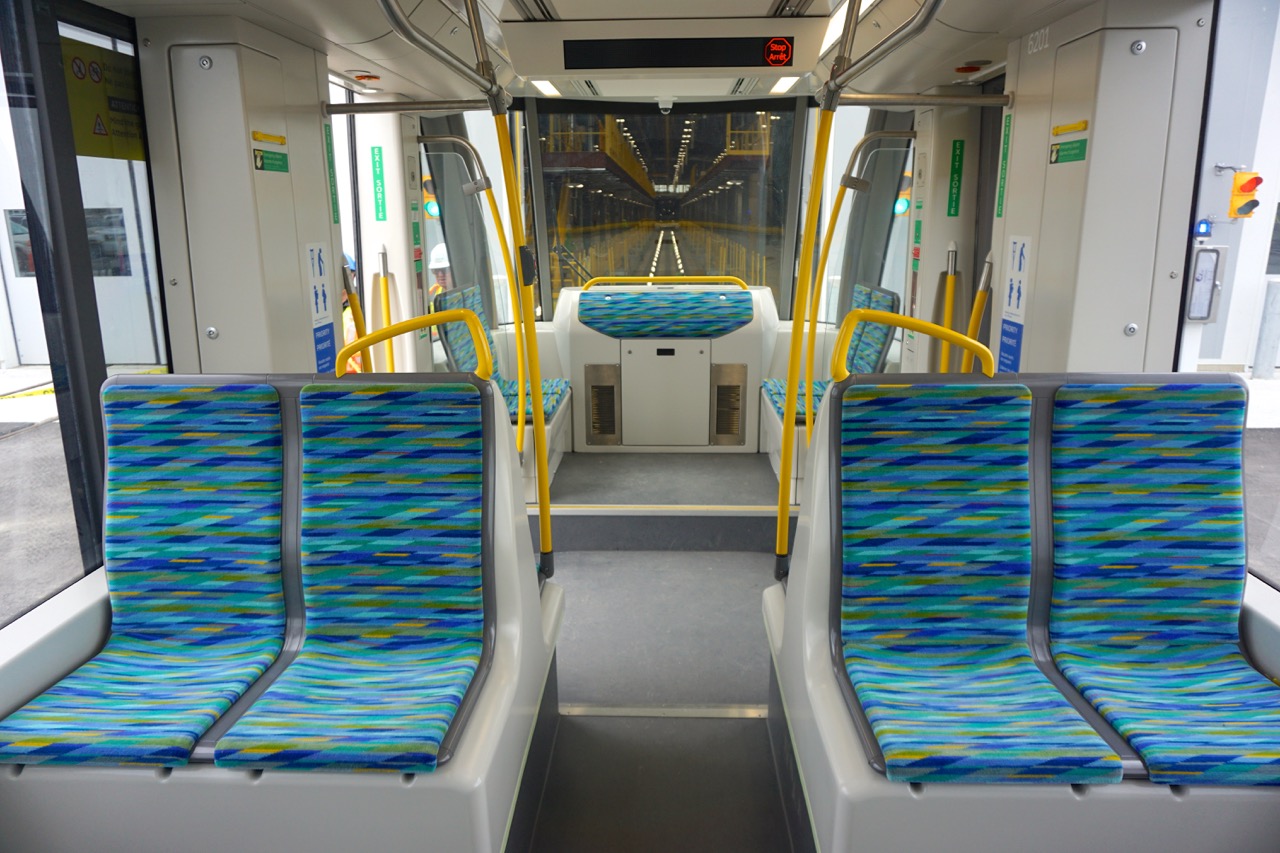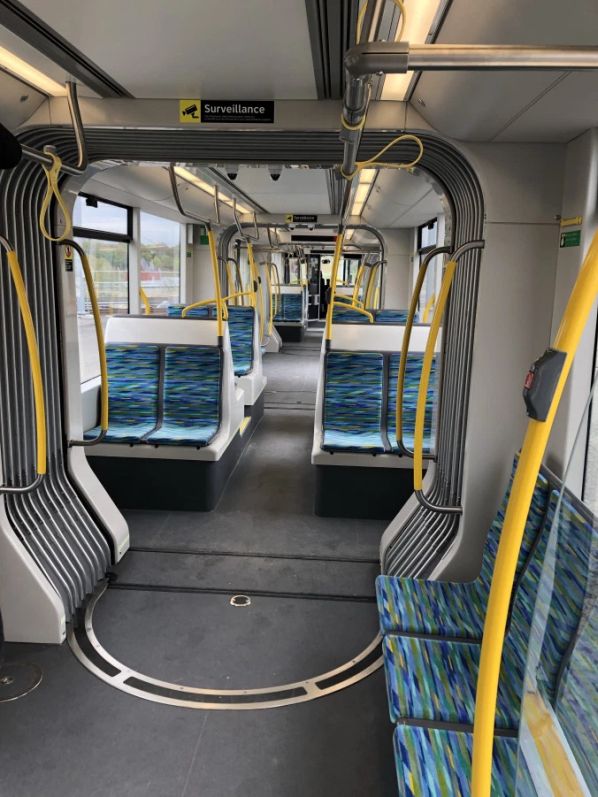Voltz
Senior Member
The planned stop spacing is fine, there is already a few pretty well spread out stop sections,



I keep forgetting these are single cab vehicles for some reason.
The new streetcars don't have pull cords either only buttons on poles and the open door button on the door works as one tooFrom link.
Noticed the "REQUEST STOP" buttons on the stanchions. Did not notice a "REQUEST STOP" cord around the windows (could be an after arrival addition). Can someone confirm that the light rail vehicles have them, and they could bypass a surface stop if no one presses a button or does not pull the cord.



From link.
They are dating pairs not married pairs. Married pairs are designed and built to stay together permanently and usually can't operate by themselves. These LRVs however are perfectly fine sailing along without their significant others or with a third wheeler around.because they are dual ended but in married pairs.
They are dating pairs not married pairs. Married pairs are designed and built to stay together permanently and usually can't operate by themselves. These LRVs however are perfectly fine sailing along without their significant others or with a third wheeler around.
Apparently there's a control set under that panel, so not really except insofar as you won't be doing it in service.You're gonna have a hell of a time going backwards along the whole line with just one of these.
Apparently there's a control set under that panel, so not really except insofar as you won't be doing it in service.
The other thing worth noting about how married (or not) these units are is that the plan appears to be three unit trains sooner than later. This is really a case of saving some cost and gaining a few seats on the (entirely realistic) assumption that single car services aren't a factor on Eglinton.
This comes up every few pages in this thread, since I think when looked at on a map, these stops look close together and needlessly frequent.I personally feel like that's too much stops for the LRT - the lrt should follow current express service stops along eglinton
Being larger also means that average commute distances are also longer which means every additional or redundant stop will cause problems. As I said previously, due to the LSE line running parallel to this LRT perhaps the issue is much smaller (assuming we get Fare Integration), but in general there is a massive risk when it comes to having tighter stop spacing especially in suburbs. You can easily get away with 1km long stop spacing in suburbs, we shouldn't be afraid to stretch stop spacing as much as possible in order to shorten commutes and make the line more attractive to use.This comes up every few pages in this thread, since I think when looked at on a map, these stops look close together and needlessly frequent.
They are actually pretty well spaced apart if you measure the distance between them, within the sweet spot for efficient LRT operations and service coverage. Scarborough is much bigger than most people realize. Cutting a few stops will probably just make service coverage significantly worse without much improvement to operations.




